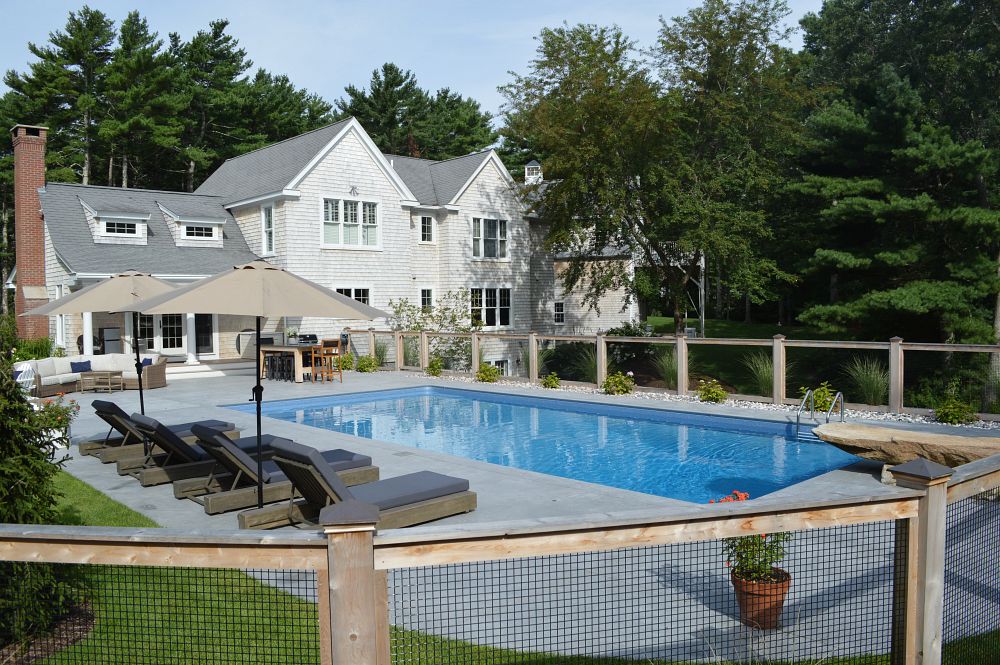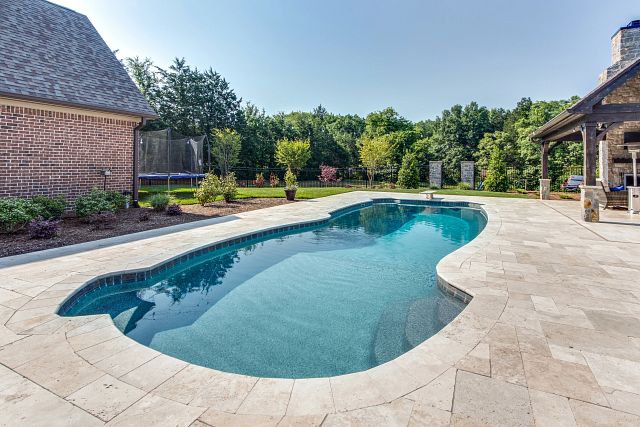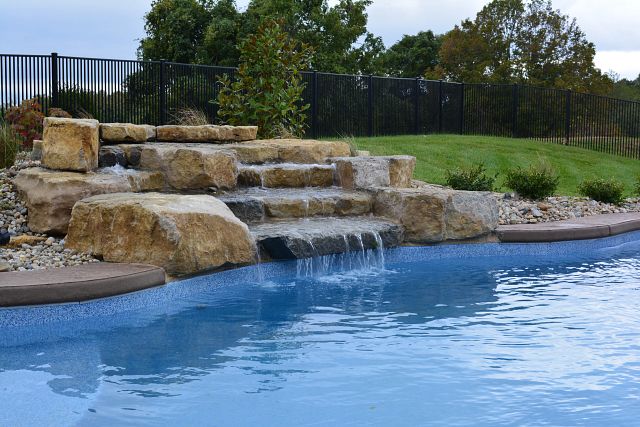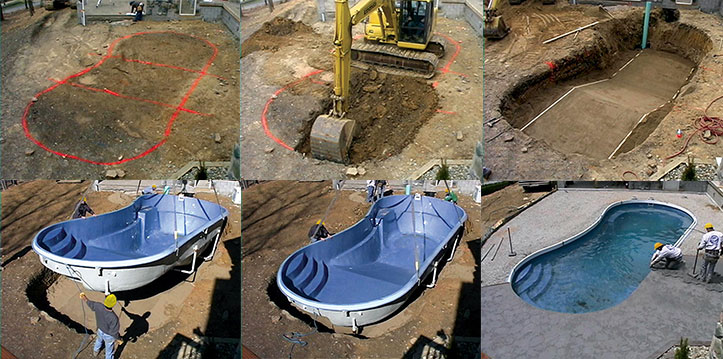Whether you’ve purchased a new home, inherited a property, or had your home for years, you might be wondering what to do with an older pool currently in your backyard.
Times and tastes change, and maybe that old pool doesn’t quite fit with the vision you had in mind for your backyard. Or perhaps you’re not quite sure how to properly take care of a pool that came with a property and considering covering it up. (Spoiler alert: Don’t!) Renovating an old pool can open up new possibilities for entertainment, exercise and relaxation.
You have lots of options when it comes to remodeling or replacing an older pool. Working with a professional pool contractor can help you explore those options and give your old pool a refresh that enhances your backyard lifestyle. Let’s dive in and learn more!
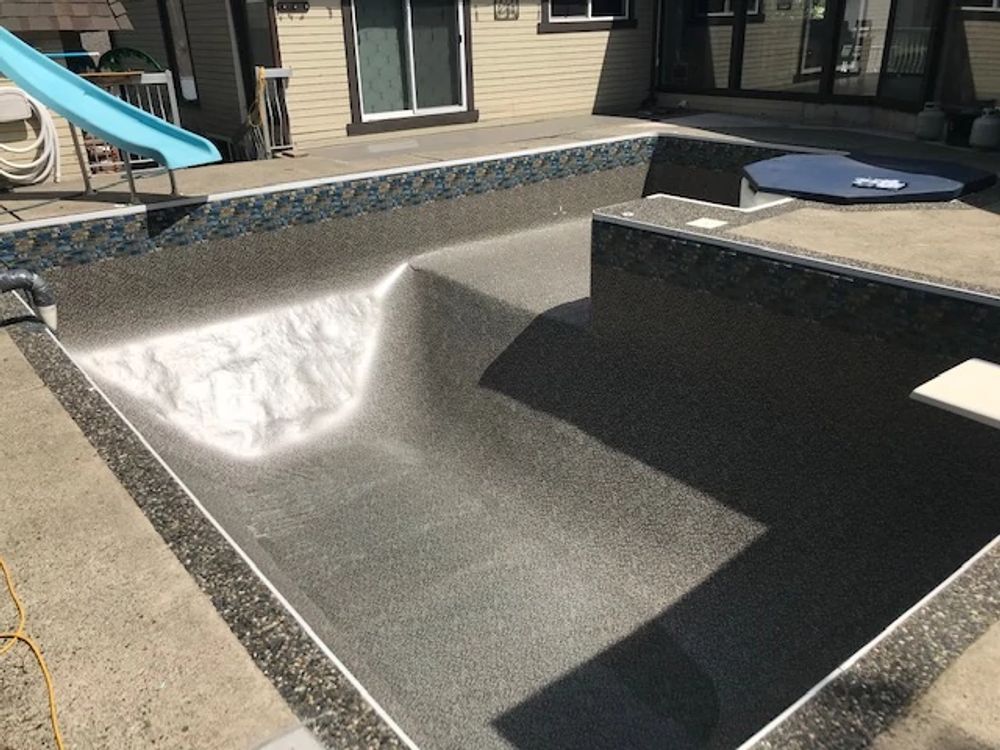
Assessing the Pool’s Condition
The first step is to take stock of your pool’s condition. An experienced pool builder can help you evaluate your pool, as they can easily spot issues you might overlook. A professional builder will examine your pool to determine how well or how poorly its previous owners cared for it. This can help you make a plan to refresh and renovate an older pool.
While your builder will conduct a thorough inspection, here’s a brief checklist that can help you understand how they’ll evaluate the condition of your pool.
- Water quality: Is your pool’s water clean and clear? Or is it green and murky? The latter could be an indicator of algae growth, which can make balancing your pool’s chemistry difficult.
- Water levels: Check water levels to be sure they stay consistent. If you see your waterline drop, it could indicate a possible leak.
- Check your pool’s surface: If your old pool happens to be a concrete or fiberglass model, examine your pool’s surface for cracks and scratches. If you have a vinyl liner pool, look for any tears or stains on your liner that could lead to leaks or algae growth.
- Equipment functionality: Be sure your pool’s filtration system, pumps and heating elements (if any) are in good working condition, free from rust, corrosion or leaks.
- Check your pool filters: Examine pool filters for any signs of damage or clogs.
- Decking condition: What material is your pool deck made from? If you have a wood deck, check for warped boards, chipped paint or splinters. If you have composite or stamped concrete, check for any cracks in the surface.
- Examine fencing: Proper pool fencing ensures your pool is compliant with state and local regulations and serves as an important safety barrier. Be sure any fencing surrounding your pool is in good condition. Look for broken latches and locks, holes or loose boards to ensure pool fencing is secure and in good condition.
While this checklist is a good starting point, your best bet is to get a professional evaluation by a qualified pool contractor. They can help you see what may be a minor, cosmetic fix vs. a bigger foundational issue that needs attention.
Pool Replacement
Extensive structural damage, outdated design or inefficient filtration systems that can be a drain on resources may indicate your old pool needs to be replaced. If you’ve decided on a full pool replacement, consult with a professional to determine what state and local permits (building, electrical, plumbing, etc.) you may need. Depending on the condition of your old pool, they may need to demolish or remove your existing pool completely and prepare the ground for a fresh structure.
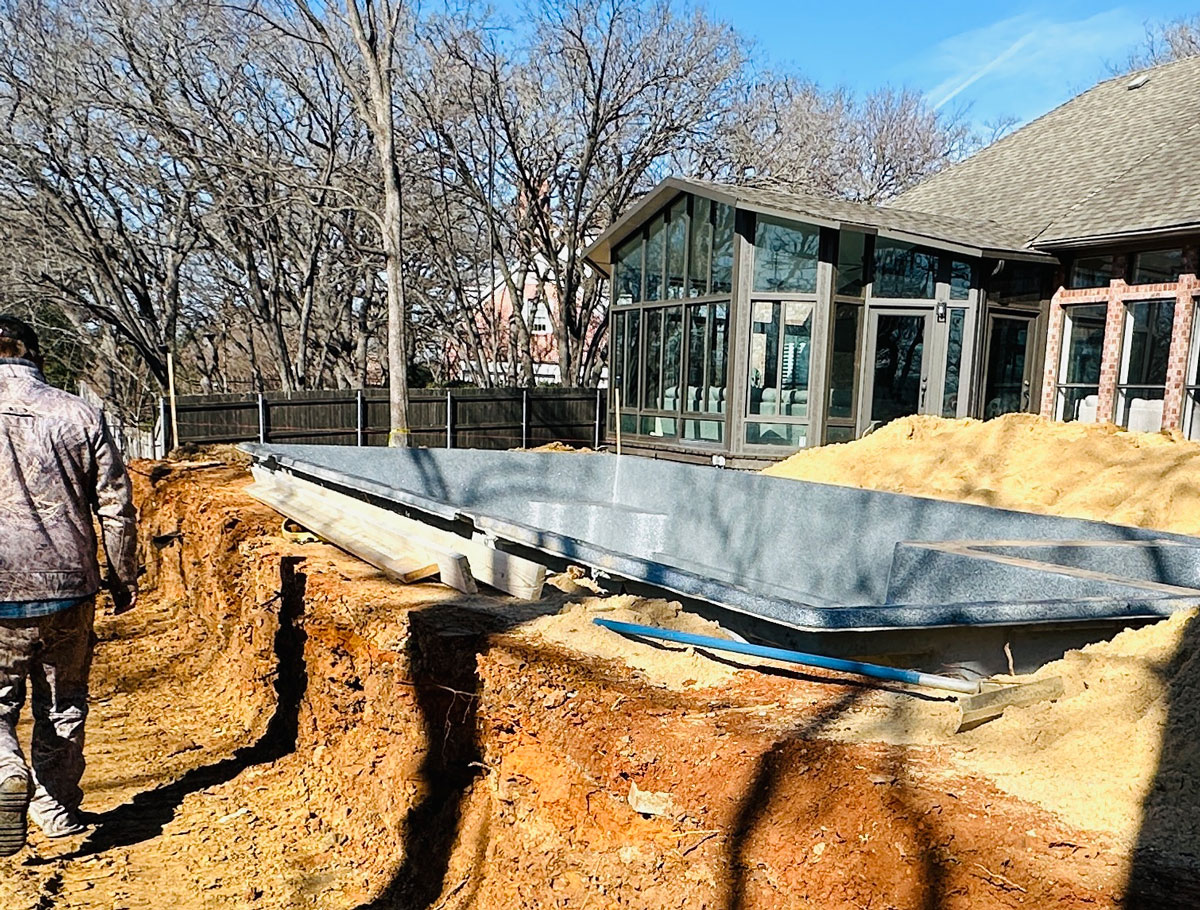
Choosing Pool Type & Materials
Choosing the right type of pool to replace an older pool has both short-term and long-term considerations. Compared to concrete pools that need a full resurfacing every 10 years, vinyl liner pools are a cost-effective option that offers flexibility of design with custom add-ons and minimal maintenance. By comparison, a well-maintained vinyl liner only needs to be replaced once every 10 years or so.
Although fiberglass pools are slightly more expensive up-front than vinyl liner pools, they are the most low-maintenance option in terms of upkeep, durability, and aesthetic appeal. They can also be installed faster than other types of pools due to their pre-engineered construction.
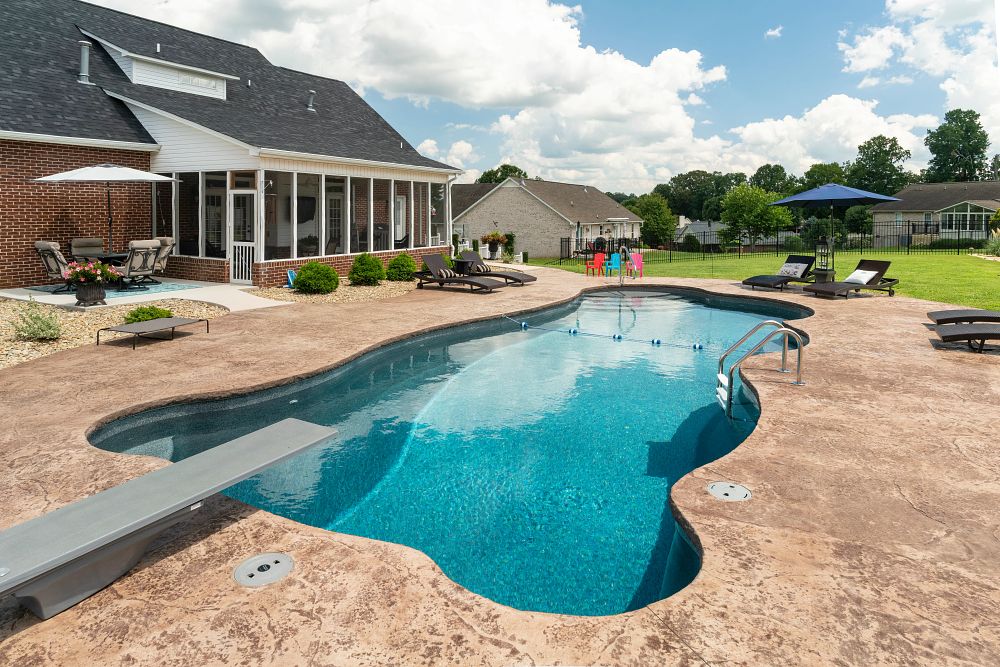
Pool Renovation
Updating your pool not only enhances property value and curb appeal, but – most importantly – transforms your backyard into a sparkling oasis that offers years of enjoyment for you and your loved ones.
Both fiberglass and vinyl liner pools offer you a variety of options to replace an older pool – and can reduce overall maintenance on a weekly basis and the lifetime of your pool. Reviving an old pool also poses an opportunity to add features that bring your backyard vision to life, including water features, LED pool lights, slides and more.
In some instances, an older pool may be in good condition, but the area surrounding your pool could use a little modernization and TLC. Renovation ideas like upgrading decking and landscaping can bring the vision you have for your backyard into clearer focus. Adding fun and functional features like a patio area, grilling station and entertainment center can transform your pool into the place to be for recreation and relaxation.
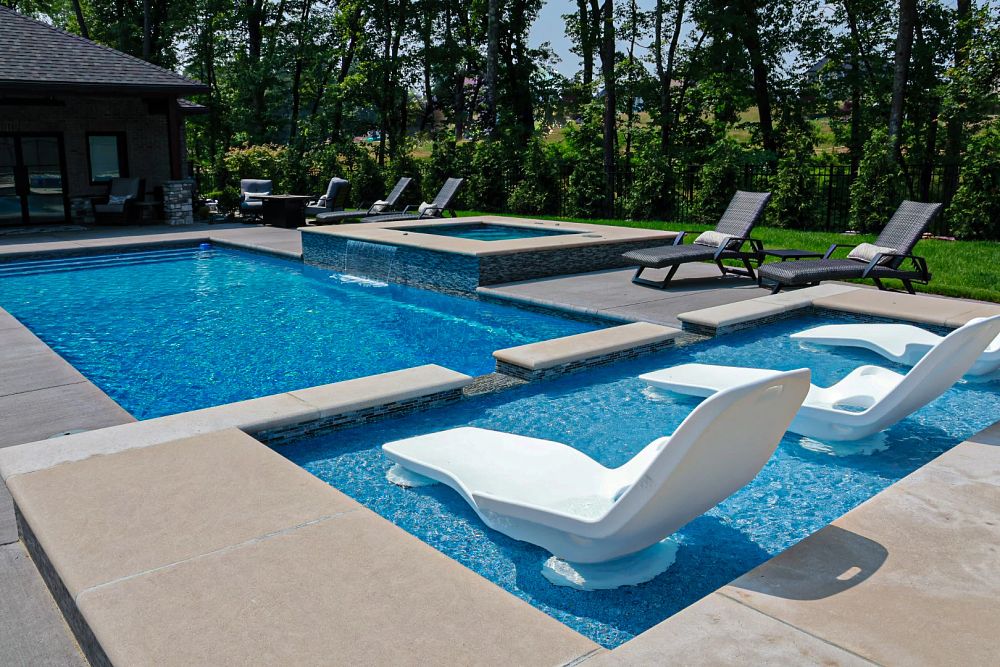
Cost Considerations: Old Pool Renovation vs Replacement
Let’s not ignore the elephant in the room: an old pool renovation project costs money. There are costs for removing an old pool, as well as installing a new pool. The total cost of your project depends upon the condition of your old swimming pool, whether you want to renovate or replace it, removal costs (if any), as well as the cost and installation of a new pool. However, revitalizing an old pool can increase your property values over time – not to mention give you a space to enjoy with loved ones for years to come.
While you certainly want to consider available funds and your current budget, pool financing options are available, allowing you to pay for your pool over time while enjoying it today.
Getting the Most Value From Your Pool Renovation
Thinking about how you plan to use your pool can help you determine how a renovation can complement your lifestyle.
If you plan to use your pool for entertaining, consider who – and how many – people will be using it. Will your pool need to incorporate kid-friendly features like a wading area or non-slip steps? Do you want to lean into family fun with an at-home mini water park, equipping your pool with slides and water features? Will you need pool railings to accommodate older adults or individuals with compromised mobility?
How much time are you willing to devote to renovating or converting your older pool? Timelines can vary depending on time of year, weather conditions, obtaining permits and even builder waiting lists.
Start formulating your wish list for what you want out of a new pool. Then chat with a licensed professional builder to explore the possibilities and make your pool dreams a reality. Your future self will thank you for making a pool part of your backyard lifestyle.
Frequently Asked Questions About Renovating an Old Pool
Do I need permits to remove a pool?
Whether you’re installing a new pool, removing or renovating an existing pool, you will likely need a building permit. Rules and regulations vary among municipalities. Check with your local builder’s office to ensure you have the correct permits before beginning work on a new pool project or contact a local builder to do it for you. Working with a licensed professional builder can help you better navigate the process.
Who should I contact to inspect my old pool?
Get in touch with a local pool pool builder or pool repair company to inquire about inspecting your old pool. They can help you to evaluate the current state of your old pool and discuss options for renovation or replacement.
Can I safely convert my old pool into something new?
Remodeling an old pool or removing it and converting it into a new structure is a big undertaking – and one that’s best left to the pros. To ensure safety and that all construction or demolition measures are compliant with state and local regulations, contact a pool professional with details about your project, what you want out of your backyard and to better understand next steps to transform your old pool.
What resources can help me learn more about pool maintenance?
If you’ve purchased a home with an older pool, learning how to maintain it can help you maximize your enjoyment and keep it in good working order. Brush up on the basics of pool upkeep, including information on proper water chemistry, cleaning pool filters and opening/closing your pool for the season.
Making the Decision: Renovate or Replace?
Determining whether you want to remodel or replace an old pool depends on a number of factors, including the condition of the existing pool and its components and – ultimately – the vision you have for your backyard. Your budget also plays a role in your pool renovation project, however, it’s important to note that financing is also an option.
Renovating an existing pool that’s come with your property can be a great long-term value add and inject a big dose of fun into your backyard lifestyle. A pool is an extension of your home and can serve as a place where many happy memories are made.
If you’re thinking of remodeling an old pool and giving it a new lease on life, get in touch with a local independent Latham builder. Schedule a pool consultation today and get one step closer to making your dream a reality.


